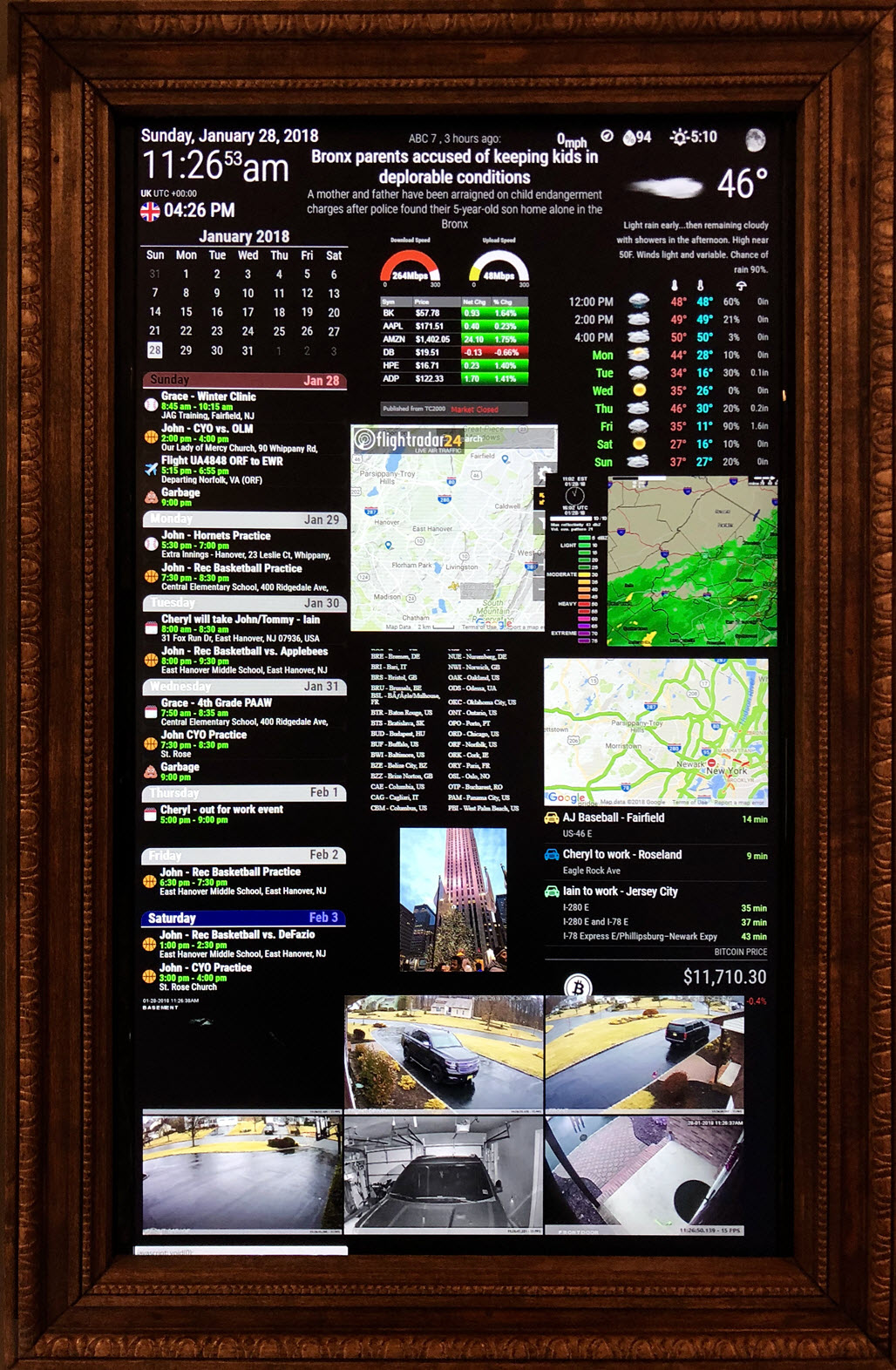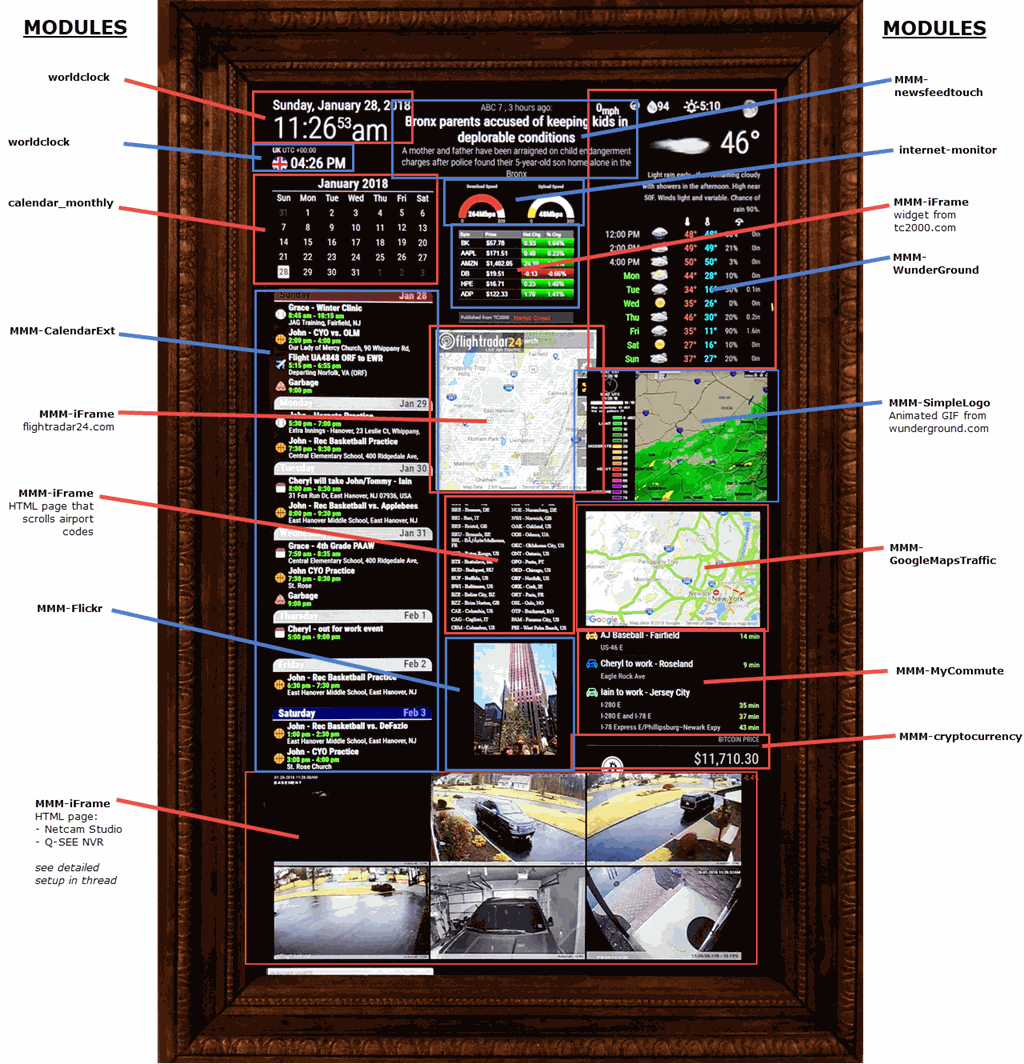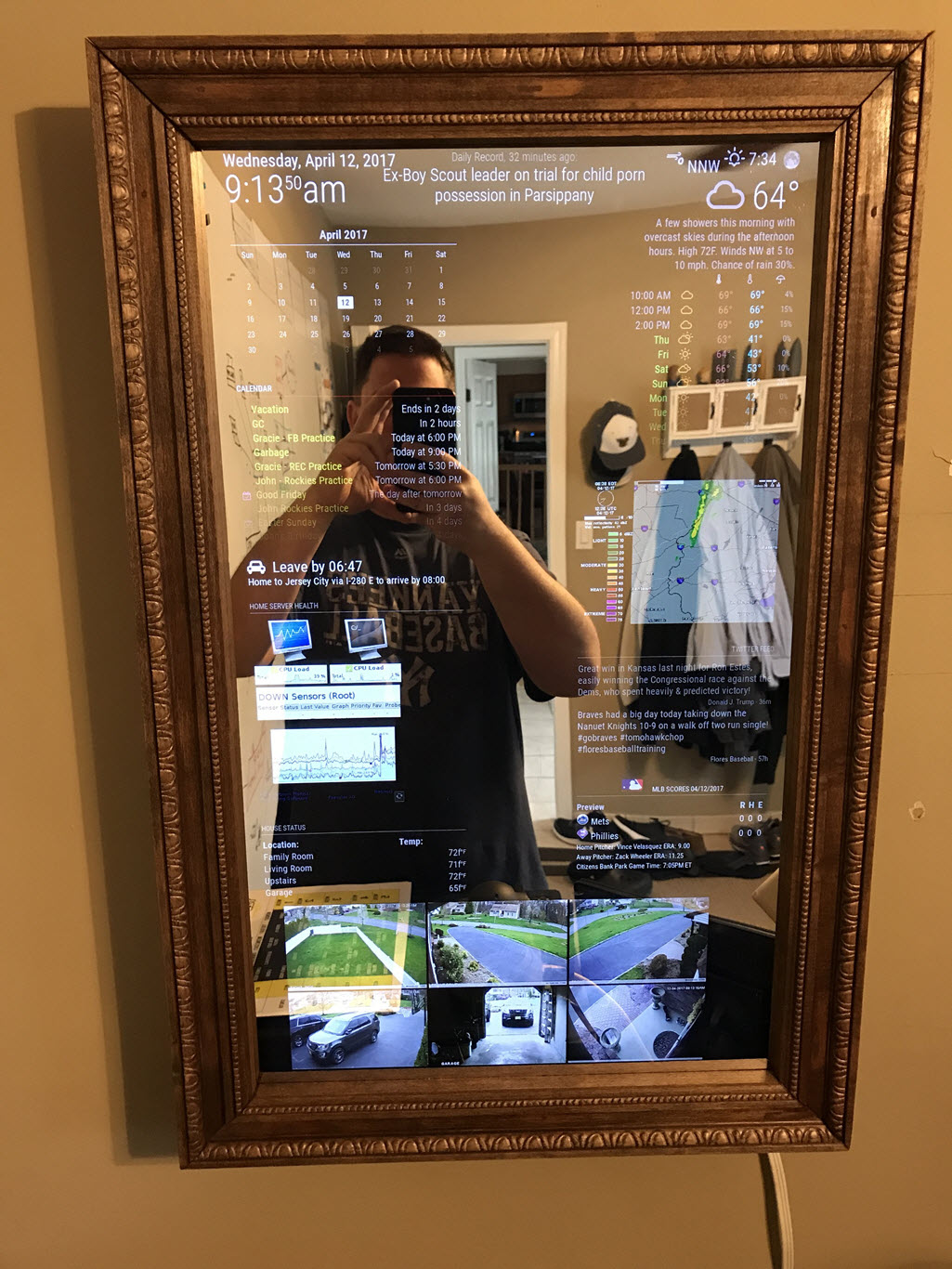A New Chapter for MagicMirror: The Community Takes the Lead
Read the statement by Michael Teeuw here.
Read the statement by Michael Teeuw here.
27" custom framed magic mirror - fun to get done
-
Since my original post, I’ve been tinkering a bit. I originally had the 2-way mirror on, but decided to remove it. Mainly because my wife said it looks like a medicine cabinet, which doesn’t belong in the kitchen. I took the mirror off and use it as a magic dashboard now. It has grown on her… :)
Here is my current setup at the moment.



